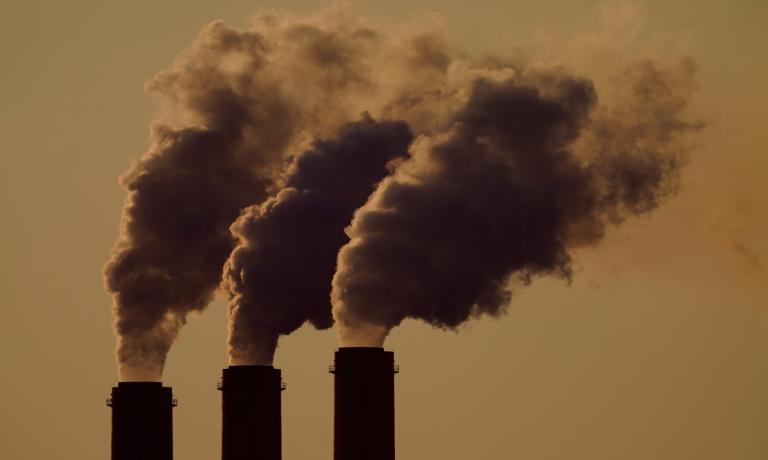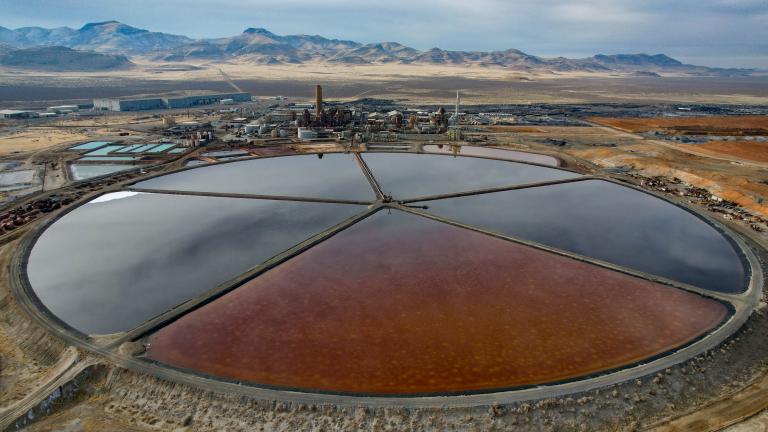This story was published in partnership with New York Focus, a non-profit news publication investigating how power works in New York state. Sign up for their newsletter here.
In November 2021, New Yorkers overwhelmingly approved a ballot measure to amend the state constitution and enshrine their right to “clean air and water, and a healthful environment.” Those eight words created the potential for a new legal regime, offering communities the highest possible defense against pollution and environmental injustice.
But the strength of that defense depends on how courts interpret it. A county supreme court judge near Rochester provided the first indication of that in December when he ruled that a suit against the state can proceed. The state appealed the decision in late January, raising questions about whether it believes the new constitutional provision, commonly referred to as the “green amendment,” has any legal significance at all.
“The vigor of the State’s opposition to this lawsuit does not bode well for its enforcement of the Green Amendment,” Judge John Ark wrote in his decision.
The suit was brought by Fresh Air for the East Side, a grassroots organization of neighbors to the sprawling High Acres landfill, one of the state’s largest. The 1,000-acre site straddles the border of Perinton and Macedon, two towns in western New York. Though it opened in the 1970s, the facility began receiving exponentially more trash — most of it from New York City — after private owner Waste Management installed a rail line in 2015. Around the same time, the company committed a “combination of errors” that inundated the town in foul smells, according to the group’s lawyer, Linda Shaw. Residents began organizing in 2017, forming a Facebook group to share information and creating an app to collect data on when, where and how often the stench returned.
They’ve been fighting Waste Management and the state Department of Environmental Conservation, which regulates landfills, ever since. The agency and the company have taken steps to mitigate the problem, including covering parts of the site and installing gas collectors and air monitors, but residents say it still stinks. Regulators have ignored recommendations by a landfill expert hired by Fresh Air for the East Side to study the odor and emissions.
Once the green amendment passed, the group sued Waste Management, New York City, and the state, claiming they were violating residents’ right to clean air. The suit cites the odors as well as greenhouse gas emissions released by decomposing waste.
All three tried to get the case dismissed. On December 7, Monroe County judge John Ark granted New York City’s motion, ruling that it is merely a customer of Waste Management and has no duty to police the site. He also let Waste Management off, finding that the green amendment cannot be held against private companies. But Ark refused the state’s request, allowing the suit to proceed.
“Essentially what this lower court did was to give legal license to the New York green amendment,” said environmental attorney Maya van Rossum, who started a movement to pass environmental rights amendments in state constitutions across the country. The judge confirmed that environmental rights must be treated like most other constitutional rights, van Rossum noted, in that they apply to the government, not private actors.
In a court filing, State Attorney General Letitia James’ office argued otherwise. It said that the green amendment does not impose specific obligations on the state, and that it doesn’t empower courts to compel agencies to take particular enforcement decisions.
Shaw said she can’t understand why the state effectively sided with Waste Management. “It violates every other thing the state of New York is trying to do, which is reduce greenhouse gas emissions,” she said.
Grist and New York Focus asked the Department of Environmental Conservation and the attorney general’s office to clarify their interpretation of the green amendment and the protections it grants New Yorkers. Both offices said they do not comment on pending litigation.
“They’re trying to pretend nothing happened,” said Nicholas Robinson, an environmental law professor at Pace University who is not involved in the case. At the same time, Robinson said, the state’s response was not unexpected. “They feel they’re entitled to wait until the highest court in New York orders them to behave otherwise. Now, that’s kind of bad in the sense that they should want to support the bill of rights. But you can also understand that they want to be protected by a court order that tells them to do it.”
New York has many environmental regulations and protections in place, and in recent years has taken steps to strengthen them. But residents have little recourse when state officials’ fail to enforce those rules, or against contaminants like PFAS that aren’t yet regulated. Van Rossum said that’s why the ability to appeal to a higher, fundamental right is necessary.
Her green amendments crusade started after she won a seminal case in Pennsylvania in 2013 striking down a pro-fracking law on the basis of the environmental rights clause in that state’s constitution. Since then, that state has seen more than a dozen cases challenging laws, permits, and zoning decisions, mostly over oil and gas drilling and pipeline construction. Montana is the only other state with environmental rights guaranteed by its bill of rights.
Green amendments don’t make every instance of pollution a constitutional infringement. All fundamental rights have limits, van Rossum said — if a government official tells someone to shut up, it’s not considered a violation of freedom of speech. “The role of the judiciary is to help us figure out when the environmental harms that we are contending with rise to that constitutional level,” she said.
John Dernbach, a law professor at Widener University who has analyzed recent Pennsylvania court decisions on the green amendment, found that in the majority of cases in which courts required plaintiffs to demonstrate a significant level of harm to a protected resource, they failed.
While the case law in New York is still inchoate, legal experts say Ark’s decision could have significant implications. The ruling declared the green amendment self-executing, meaning it does not depend on additional legislation to go into effect. It found that the state may run afoul of the new constitutional protections even when it complies with state law. And it put the burden not on the plaintiffs to prove their rights have been violated, but on the government to show that they hadn’t been.
“That shifts the burden of proof from the individual, who is the victim, to the governmental body, that has all the resources and most of the scientific evidence, to bring that forward,” Robinson said, “and show to a judge that they have not harmed the health or the clean water or the clean air rights of the individuals who brought the case.”
At least four other green amendment cases have been filed in New York. In one, residents of Manhattan’s Lower East Side are using it to fight construction of two skyscrapers. Another was brought by Seneca Lake Guardian, an environmental group, against the state for approving a waste transfer station that could leak toxic chemicals into Cayuga Lake, a source of drinking water.
It’ll become clearer what the green amendment means in practice as those cases make their way through the courts. “You don’t change a big entity like the state of New York by just having a vote to amend the Constitution,” Robinson said. “We now have a decade-long process of implementing it.”




